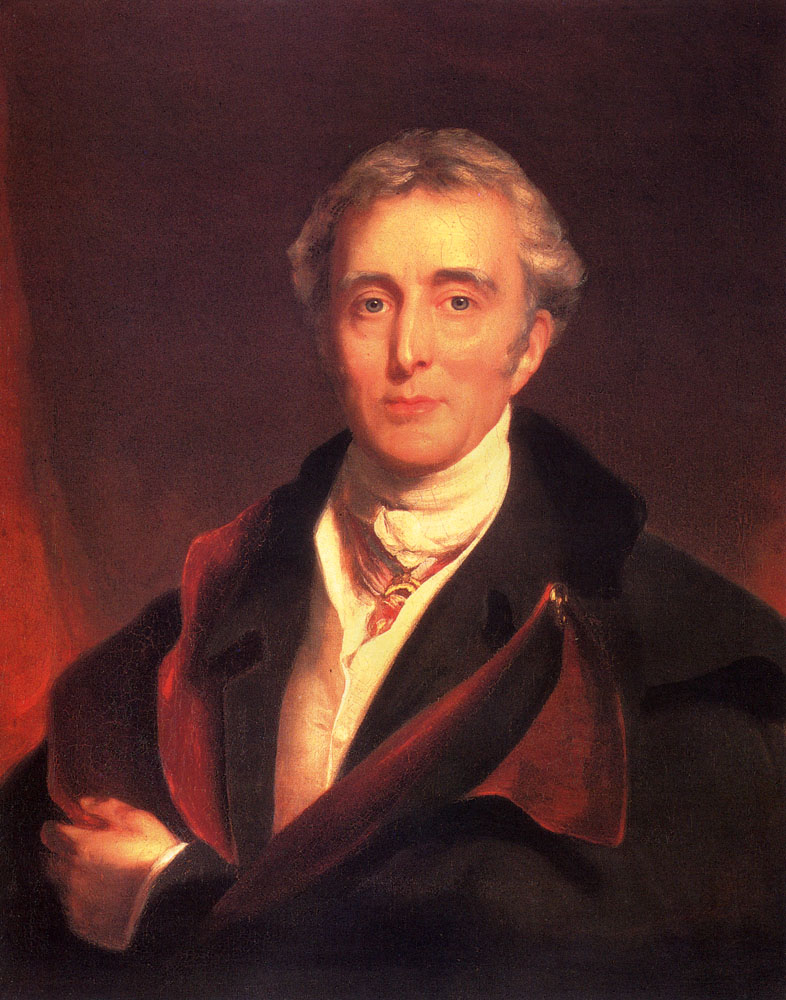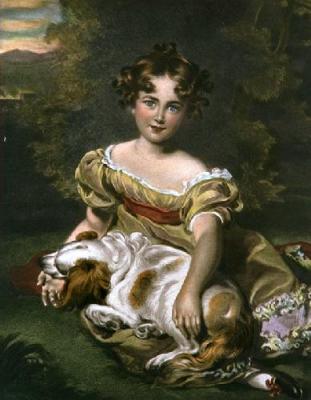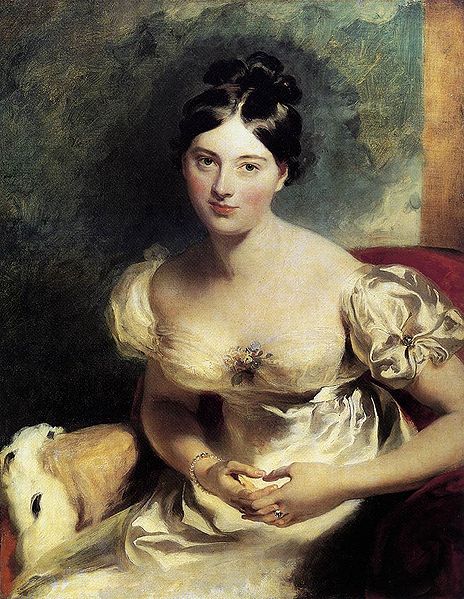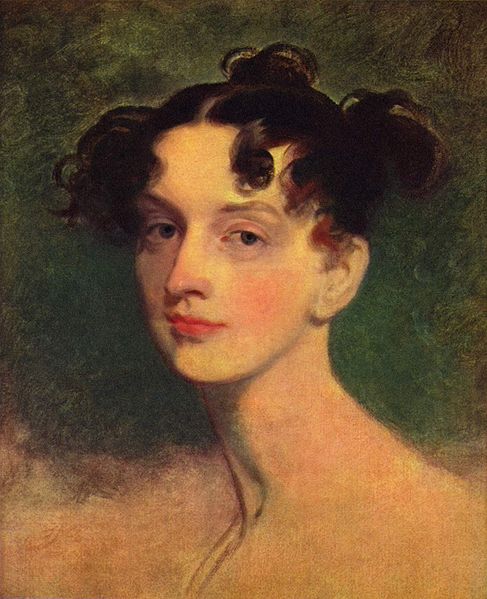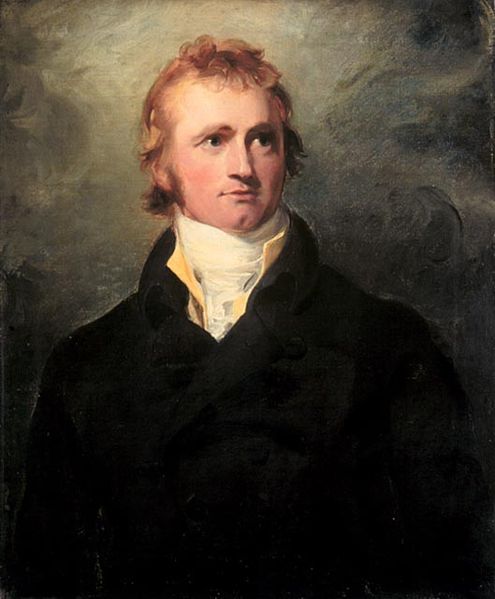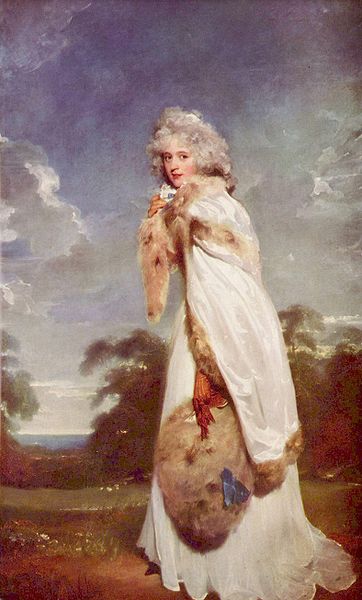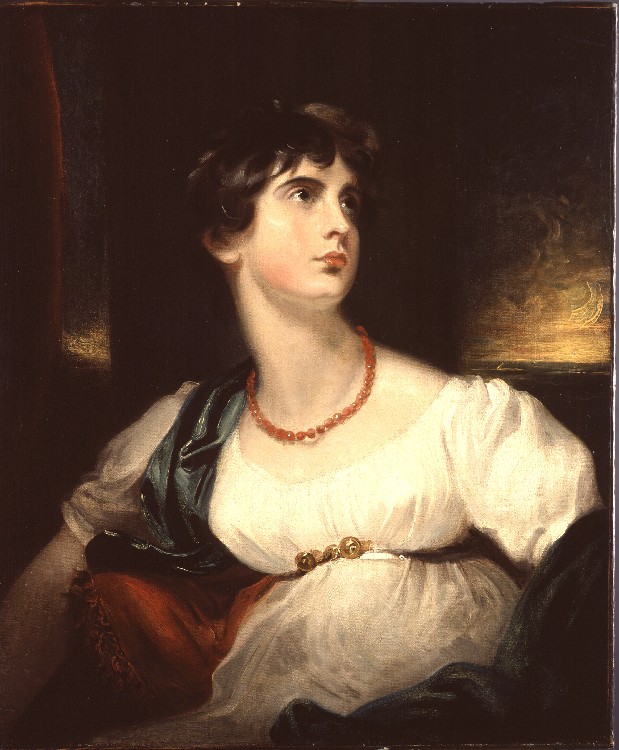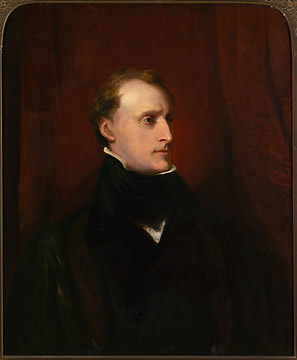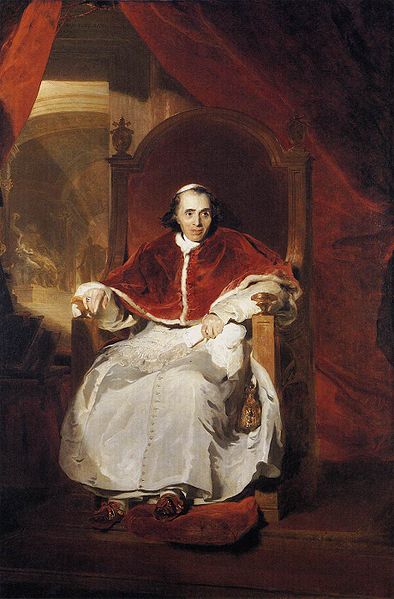<Back to Index>
- Inventor Antonio Meucci, 1808
- Painter Thomas Lawrence, 1769
- Prime Minister of the United Kingdom Frederick North, 2nd Earl of Guilford, 1732
PAGE SPONSOR
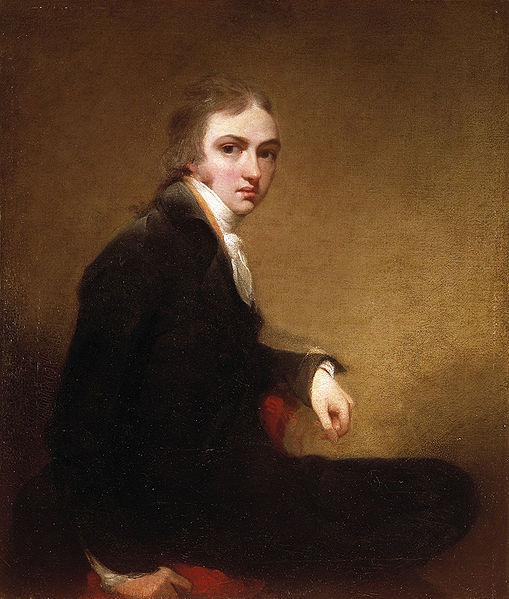
Sir Thomas Lawrence RA FRS (13 April 1769 – 7 January 1830) was a leading English painter, remembered for his portraits, though he also painted ambitious narrative subjects.
He was born in Bristol. His father was an innkeeper, first at Bristol and afterwards at Devizes, and at the age of six Lawrence was already being shown off to the guests of the Bear as an infant prodigy who could sketch their likenesses and declaim speeches from Milton. In 1779 the elder Lawrence had to leave Devizes, having failed in business and Thomas's precocious talent began to be the main source of the family's income; he had gained a reputation along the Bath road. His debut as a crayon portrait painter was made at Oxford, where he was well patronized, and in 1782 the family settled in Bath, where the young artist soon found himself fully employed in taking crayon likenesses of fashionable people at a guinea or a guinea and a half a head. In 1784 he gained the prize and silver-gilt palette of the Society of Arts for a crayon drawing after Raphael's "Transfiguration," and presently beginning to paint in oil.
Abandoning the idea of going on the stage which he had briefly entertained, Lawrence came to London in 1787, was kindly received by Sir Joshua Reynolds, and became a student at the Royal Academy. He began to exhibit almost immediately, and his reputation increased so rapidly that he became an associate of the Academy in 1791. The death of Sir Joshua in 1792 opened the way to further successes. Lawrence was at once appointed painter to the Dilettanti Society, and principal painter to King George III in lieu of Reynolds. In 1794 he was a Royal Academician, and he became the fashionable portrait painter of the age, his sitters including England's most notable people, and ultimately most of the crowned heads of Europe. Caroline of Brunswick was one of his favourite subjects, and is reputed to have been his lover for a time.
He was never married.
Financial problems plagued Lawrence. In 1796, Lord Seaforth, one of Lawrence's close patrons, gave him £1,000 (equivalent to about £77 thousand in present day terms) to relieve him from his financial difficulties. Lawrence painted several portraits for Lord Seaforth, including a full-length portrait of Seaforth's daughter, Mary.
In
1815
Lawrence
was knighted; in 1818 he went to Aachen to paint the sovereigns and
diplomats gathered there for the third
congress, and visited Vienna and Rome,
everywhere
receiving flattering marks of distinction from princes, due
as much to his courtly manners as to his merits as an artist. After
eighteen months he returned to England, and on the very day of his
arrival was chosen president of the Academy in place of Benjamin
West, who had died a few days before. He held the office from
1820 to his death. On 28 February 1822 he was elected as a Fellow
of
the Royal Society "for
his
eminence
in art". Sir
Thomas
Lawrence had all the qualities of personal manner and artistic
style necessary to make a fashionable painter, and among English
portrait painters he takes a high place, though not as high as that
given to him in his lifetime. His more ambitious works of history
painting in the
classical style, such as his once celebrated "Satan," are practically
forgotten, as is the fate of most such efforts by British artists of
the period, including Reynolds. The best
display of Lawrence's work is in the Waterloo Gallery of Windsor, a
collection of much historical interest, along with his famous painting
of the Duke
of
Wellington. "Master Charles
William Lambton" also known as "The
Red
Boy" (1825), painted for Lord
Durham at the price of 600
guineas, is regarded as one of his best portraits. There are works in
most British museums, especially the National
Gallery,
London, and Tate
Britain, and many in American
museums, exported during the early
20th century craze there for English portraits. "Pinkie" in The
Huntington is a
good example. The Vatican
Pinacoteca has a swagger
portrait of himself
presented by George
IV as almost its
only British work. The
Life
and Correspondence of Sir T. Lawrence, by DE Williams,
appeared in 1831.
